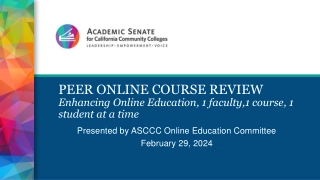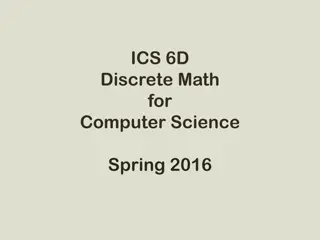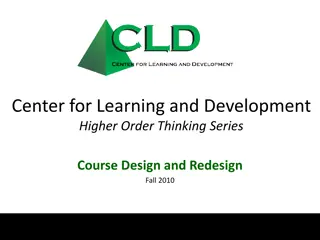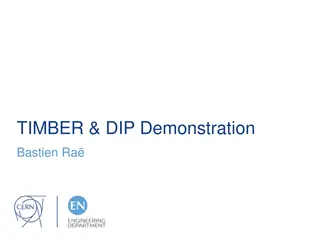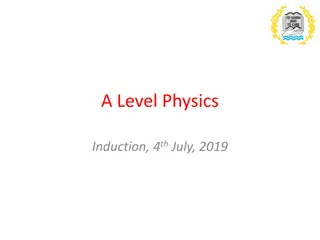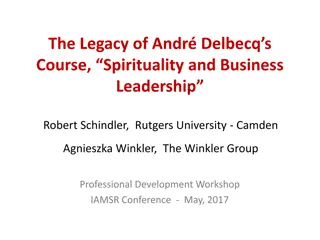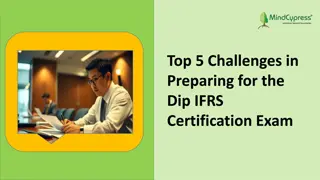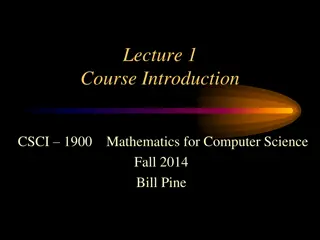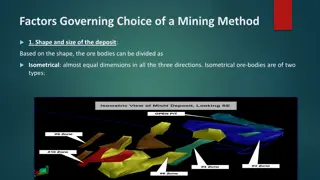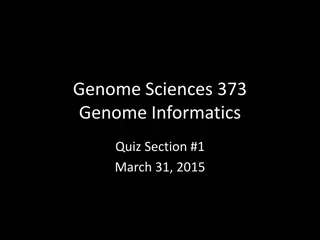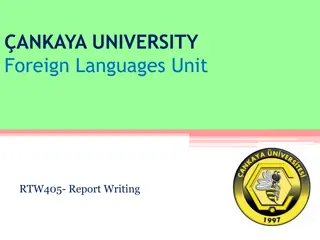
Mastering News Writing: Essential Course Overview
Dive into the fundamentals of news reporting and writing with this comprehensive course. Explore journalistic principles, news values, writing techniques, and news presentation formats. Enhance your skills in sourcing information, structuring stories, and delivering news across various platforms. Develop a strong foundation in journalism through practical assignments and insightful references.
Download Presentation

Please find below an Image/Link to download the presentation.
The content on the website is provided AS IS for your information and personal use only. It may not be sold, licensed, or shared on other websites without obtaining consent from the author. If you encounter any issues during the download, it is possible that the publisher has removed the file from their server.
You are allowed to download the files provided on this website for personal or commercial use, subject to the condition that they are used lawfully. All files are the property of their respective owners.
The content on the website is provided AS IS for your information and personal use only. It may not be sold, licensed, or shared on other websites without obtaining consent from the author.
E N D
Presentation Transcript
Course Outline Let s start with the first set of slides 1 MODULE NAME: NEWS WRITING CODE NUMBER .JST 05105
This course aims to expose you to basic journalistic principles, and to build fundamental reporting and writing skills. These goals are pursued in lectures, assignments, and reporting exercises that echo the situations professional journalistsface. By the end of the course, you can expect to have a good grasp of the fundamentalissuesandmethodsofgatheringnews&writingnewsstories Tofurnishyouwiththeknowledgeofsourcesandresourcesfornews, Toenlightenyouonhowtohandlepressreleases, Toeducateyouonhowtoreportspeeches,pressconferences,andmeetings, Tofamiliarizeyouwiththenature,typesofbeatsandbeatreporting;and Tointroduceyoutoinvestigativereporting. 2
News Reporting and Writing is a skills-based immersion into journalism. The course will introduce the students to news writing and reporting: How to write the lead/intro, techniques of news writing and reporting, news sources and techniques for newsgathering This course is designed to train you to become skilled in writing publishable news stories. The course examines the basic definitions of news, types of news, news values, structures of news, and journalistic news presentation formats. The course also examines the various types of headline, leads, and the inverted pyramid, transitions and news structure. Students will learn the foundations of journalism and the craft's two main components - reporting and writing of the news -and will explore how news is delivered through mobile devices, TV, radio, Web and printed publications 3
Assignments2 Group work 1 Individual works 1 Presentation 1 Test 1 LEARNINGOUTCOMESANDCOMPETENCES 1 Students acquire basic knowledge s about news reporting and writing 2 Students will be able to use better sources of information, to structurethestoryforanewspaper,TV,Radio, andlongstories. 4
REFERENCES/ READING Akinfeleye, R. (1987). Essentials of Modern African Journalism: A Premier (2nd ed.). Lagos: Miral Printing press. Alao, D. (1992). News Reporting. Lagos: Unique Publications, p. 23-24. Mencher, M. (2000). News Reporting and Writing (8thed.). Boston: McGraw Hill. Randall, D. (2000). The Universal Journalist (2nded.). London: Pluto Press. Sonaike, F. (1987). Fundamental of News Reporting. Ikeja: John West Publications Ltd. Christian, D.; Jacobsen, S.; Minthorn, D. (2008). The Associated Press Stylebook (43rd ed.). New York: The Associated Press. Baskette, F., Sissors, J. & Brooks, B. (1997). The art of editing (6th ed.) Harrigan, J. & Dunlap, K. (2003). The editorial eye. Bedford/St. Martins, New York, New York 1001 5
CONTINOUSLY ASSESSMENT Assignments Presentations Quiz Test END EXAMS MARKS This examination shall be conducted for This examination shall be conducted for a duration not exceeding three (3) hours, a duration not exceeding three (3) hours, but not less than two (2) hours. End of but not less than two (2) hours. End of module examination could cover both module examination could cover both theory and practical but should be done theory and practical but should be done under supervision of institute s official under supervision of institute s official assessors. The end of semester exam assessors. The end of semester exam will constitute 40% while continuous will constitute 40% while continuous assessment will constitute 60%. assessment will constitute 60%. 6
THANKS! Any questions? 7

